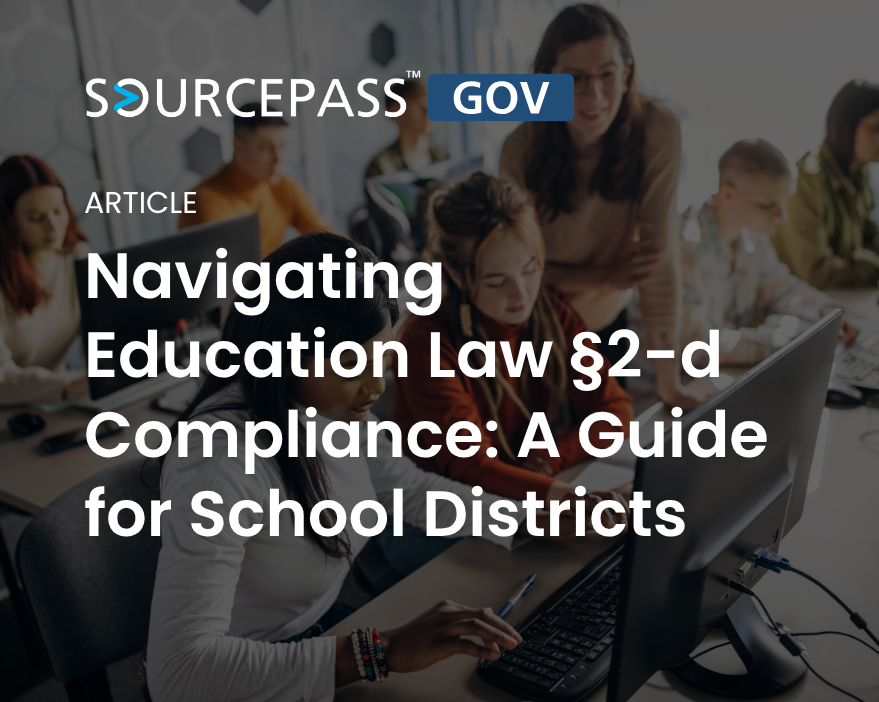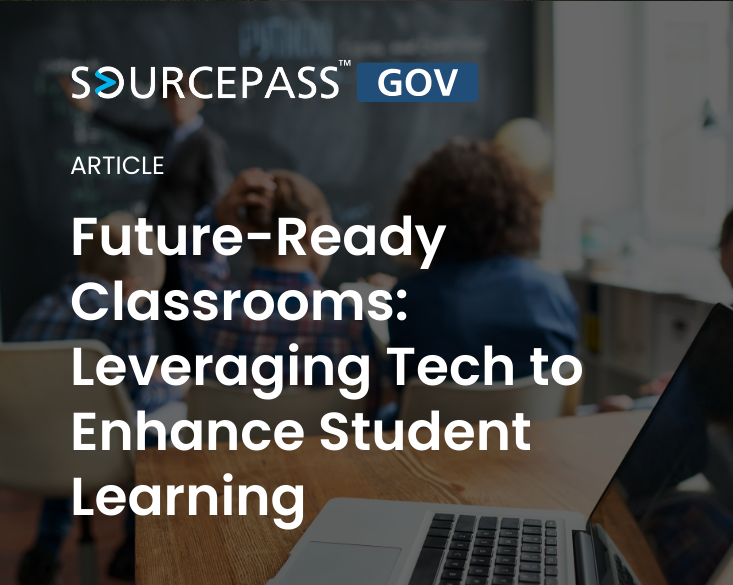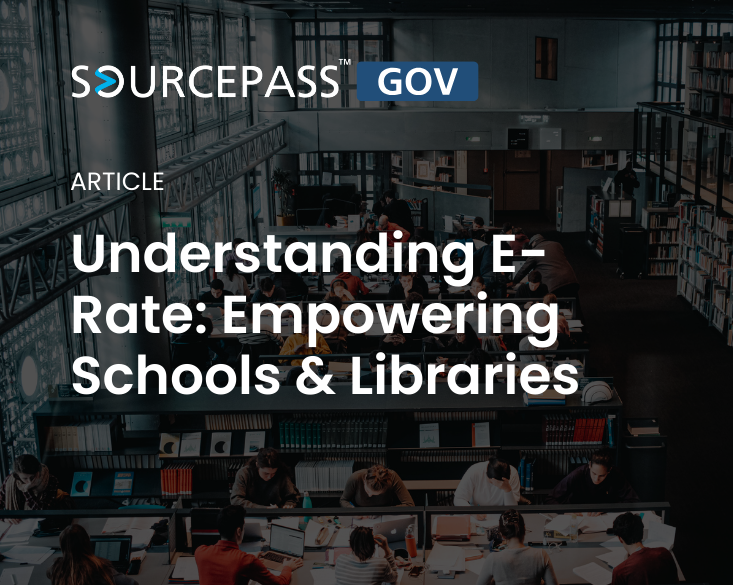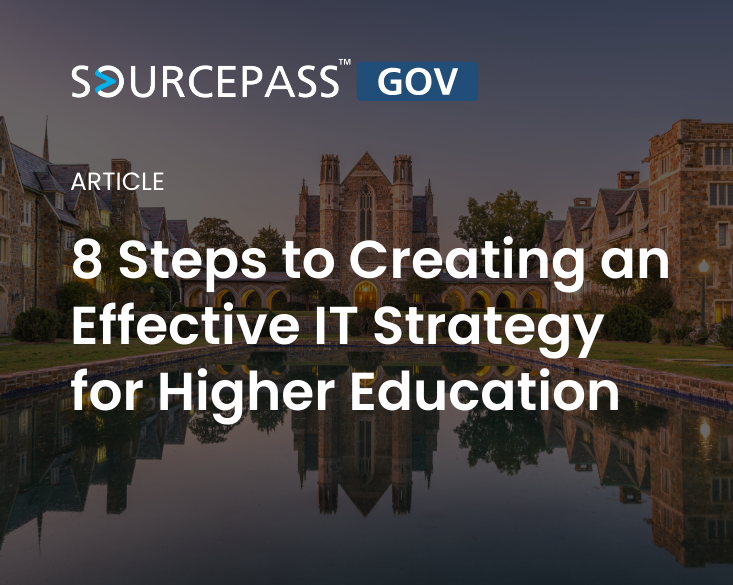3 min read
Top 10 Priorities for State Chief Information Officers
More than halfway through 2025, state Chief Information Officers (CIOs) continue to navigate a dynamic landscape of technological advancements and...
4 min read
Alex Davis : Feb 10, 2025 8:00:00 AM

The shift to hybrid learning models—blending in-person and online education—has become a permanent fixture in many educational institutions.
As schools and universities embrace this new norm, the need for robust, reliable, and secure network infrastructure has never been more critical.
Whether it's enabling seamless video conferencing, supporting collaborative tools, or ensuring smooth access to learning management systems (LMS), a strong network backbone is essential for the success of hybrid learning environments.
To build a network infrastructure that supports hybrid learning models effectively, institutions need to focus on several key factors.
Let's explore the essential components of a reliable network infrastructure and best practices for making hybrid learning seamless for students and educators alike.
The foundation of any reliable network infrastructure starts with internet connectivity. In a hybrid learning environment, students and faculty must have uninterrupted access to online resources, virtual classrooms, and collaborative tools.
A slow or unstable internet connection can lead to frustrating learning experiences, making it difficult for students to attend classes, submit assignments, or participate in discussions.
To support this, institutions need to invest in high-speed, scalable internet connections. Fiber-optic broadband is ideal for delivering fast, reliable internet, ensuring that users can access cloud-based tools and educational platforms with minimal latency.
Scalability is crucial. As institutions grow, or as more students and staff access resources remotely, the network must be able to handle increased demand without compromising performance. A flexible network that can scale up or down depending on usage patterns will ensure long-term reliability.
For students and faculty who are on campus, reliable Wi-Fi access is essential. Whether it’s in classrooms, libraries, or common areas, having strong and consistent Wi-Fi coverage ensures that learners and instructors can stay connected and engaged throughout the day.
Deploying a Wi-Fi network with enough access points (APs) and a high-density configuration can prevent issues like network congestion, dropped connections, or slow speeds. Access points should be strategically placed to ensure comprehensive coverage, particularly in high-traffic areas like lecture halls or study spaces.
Furthermore, institutions should consider Wi-Fi 6 (the latest Wi-Fi standard), which offers faster speeds, greater capacity, and improved performance in crowded environments. This is particularly beneficial in hybrid classrooms where multiple devices might be connected simultaneously.
.png?width=2250&height=1250&name=Sourcepass%20Featured%20Blogs%20(12).png)
A major component of hybrid learning is the use of cloud-based services and tools. Cloud platforms provide a centralized location for storing educational content, facilitating real-time collaboration, and enabling virtual classrooms.
Platforms like Google Classroom, Microsoft Teams, Zoom, and others have become integral to hybrid learning, but they rely heavily on a stable, fast network to function effectively.
When designing network infrastructure, it's essential to ensure that the network can support the demands of cloud-based tools and services. This includes ensuring sufficient bandwidth and low latency to ensure smooth video conferencing, real-time collaboration, and file sharing.
Additionally, redundancy should be built into the cloud infrastructure to mitigate downtime and ensure continuous access to critical resources.
With the increase in online learning comes a higher risk of cyber threats. Schools and universities must safeguard their network infrastructure against potential breaches, data theft, and unauthorized access, especially when dealing with sensitive student and staff data.
A key consideration in building a reliable network infrastructure is implementing strong cybersecurity measures. Firewalls, intrusion detection systems (IDS), and encryption protocols should be in place to protect the network from external threats. Additionally, institutions should adopt a zero-trust security model, where all users, devices, and applications are verified before gaining access to the network, regardless of whether they are inside or outside the institution’s perimeter.
Scalability also plays a role in network security. As hybrid learning continues to grow in popularity, the network must be able to accommodate more devices—such as laptops, smartphones, and IoT devices—without jeopardizing security. Managing network traffic and ensuring that each device is appropriately authenticated and authorized can prevent network congestion and security vulnerabilities.
Network downtime in a hybrid learning environment can be disruptive to both in-person and online learning. Whether it’s due to equipment failure, network overload, or a cyberattack, ensuring that students and educators can rely on the network at all times is essential.
To mitigate the risk of downtime, institutions should build redundancy into their network infrastructure. This could mean setting up backup internet connections, utilizing multiple data centers for cloud services, or having backup power systems in place (like uninterruptible power supplies, or UPS) to ensure continuous access to online learning platforms.
Additionally, a well-thought-out disaster recovery plan (DRP) should be in place to quickly restore services in case of an emergency. The DRP should include backup protocols for critical systems, data storage, and network devices, ensuring that essential educational services can be quickly restored with minimal disruption.
A hybrid learning model is only as effective as the technology supporting it. This includes not only the network infrastructure but also the devices and tools in the classroom.
Hybrid classrooms need to be equipped with microphones, cameras, and interactive displays that enable instructors to teach both in-person and remote students simultaneously.
Investing in high-quality audiovisual equipment ensures that remote students can clearly hear and see what’s happening in the classroom. Additionally, integrated classroom management systems that connect physical devices with virtual tools will make it easier for instructors to share content, monitor student progress, and facilitate engagement.
It's also crucial to provide support for troubleshooting and maintenance of hybrid classroom technology. Having dedicated IT staff who can assist with equipment setup and technical issues will ensure that disruptions are kept to a minimum.
Finally, a reliable network must support collaborative tools and learning management systems (LMS) that enable smooth communication and collaboration between students and instructors, both inside and outside the classroom.
Learning management systems (such as Canvas, Blackboard, or Moodle) serve as central hubs for course content, assignments, grades, and feedback. These systems must be accessible and perform well on both campus networks and at-home connections to ensure that learning is uninterrupted, no matter the environment.
In addition to LMS platforms, collaborative tools such as Microsoft Teams, Slack, or Google Meet are becoming increasingly vital for communication in hybrid learning models. Ensuring that these tools are integrated into the institution’s network infrastructure—and that they are optimized for performance—is essential for enhancing the hybrid learning experience.
Building reliable network infrastructure for hybrid learning models requires careful planning, investment, and foresight.
With the right infrastructure in place, educational institutions can provide students with the flexibility to learn anytime, anywhere, and create an environment where both traditional and digital learning thrive in harmony.
Utilizing a partner like Sourcepass GOV makes this transition easy, so you can focus on your core mission -- educating the public. Contact the GOV team today to learn more about the endless capabilities for public schools.

3 min read
More than halfway through 2025, state Chief Information Officers (CIOs) continue to navigate a dynamic landscape of technological advancements and...

2 min read
Protecting student data is a top priority for school districts. New York's Education Law §2-d, enacted during the 2014-2015 fiscal year, sets forth...

3 min read
Ransomware attacks are a significant threat to state and local governments. These attacks can cripple essential services, compromise sensitive data,...

As technology continues to evolve, so too must the way we approach education. In today’s world, integrating technology into the classroom isn’t just...

In today’s digital age, robust internet access and advanced technology are critical for education and learning. Yet, many schools and libraries face...

In 2025, higher education institutions face the dual challenge of providing cutting-edge technology solutions while maintaining robust, secure IT...